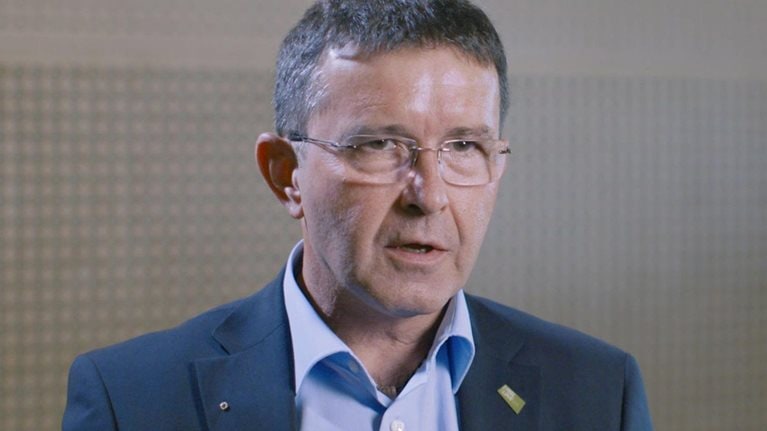Across the world, workers are growing more frustrated, both with the difficulty of making a living and reduced access to decent public services. These are legitimate concerns, says Vodafone Group CEO Vittorio Colao in this video interview, and it’s the responsibility of the private and public sectors to collaborate on how to deliver better public goods—through technology and, potentially, taxation.
Interview transcript
Is populism self-defense against technology? That’s a possible explanation. Actually, I think technology should be the solution to these problems. We need to think in broader terms, not to use technologies simply to increase productivity but also to start thinking of a different way the private sector, society, the public sector, and nonprofits can interact to deliver more value in those public goods.
Let’s work under the assumption that people are not stupid. And they see that, yes, the world is growing. But there is an accumulation of wealth, in individuals or in companies, which is unprecedented in history. On the other hand, people look at their jobs; they look at their families. I really think there is an intergenerational concern—what will my children do or how will they live? It’s legitimate. What I don’t like is that it sounds like, “Oh, it’s an irrational thing pushed by fake news through Facebook.” It’s not. That might be the way to accelerate the problem. But there is some genuine discomfort. And can I genuinely say that it’s not justified? I think it is justified. Because we know that automation, machine learning, and technology are increasing productivity but are possibly going to, at least, change the nature of some jobs.
We need to reassure the population at large that our society will always create value in jobs. The question is which jobs. I’ll give you an example. We are working on 5G,1 and we are working with partners on 5G. One of the ideas is to change the concept of what an ambulance is. Is an ambulance a vehicle to take somebody from a place to a hospital? Or is it actually a “remotized” beginning of treatment? Now a connected ambulance could be a neighborhood mini-hospital.
It could be a quick, easy way to get treatment. Then you start thinking, “Maybe I should equip it or staff it with different people, put in much more technology, give more service.” You start thinking of a different concept of health management in a city or in a region.
If we started thinking, technology, yes, will create problems. But we can not only create solutions in delivering more value to public goods but also create jobs. Then optimism can kick in. And you only need a bit of optimism. You don’t need to resolve all the problems in one shot. Of course, there will be a long transition.
How social entrepreneurs, business, and government can collaborate
There are social entrepreneurs who really think they’re very good at requalifying people after difficult periods in life: inmates in jails, or a thing I am personally involved with in Italy—privately, not with Vodafone—an organization that deals with kids in very difficult situations.
To be honest, if I look at how effective they are in doing it, actually, they are much better. But they do it partially with public money, based partially on work, partially results. That’s the model where we need to go. If you unleash the power of technology, I’m sure that there are a lot of people who are today 20, 25, 30, who really want to do that. They don’t want to work for McKinsey or Vodafone. They want to do their own thing. Maybe they don’t want to become billionaires, but they want to do something that has impact. And then you get into the whole impact-investing discussion and how you measure impact. This to me is the core of Society 3.0, or how can we use technology to resolve problems. Still, I’m thinking, can we really architect this or do we have to leave it to local forces and hope that the outcome will be consistent?

Productivity for better government services
Quality services are essential to address social inequality
I really believe that the problem of taxation is when there is low delivery of quality services. When you start having good public transport, people appreciate it, genuinely appreciate it. And they have examples both in the UK and Italy, which are the two countries I really observe a lot. When these things work, the level of disenfranchisement within a society actually goes down. You may still vote Left, vote Right, vote whatever, but at least it’s a constructive thing in the society. To me the two problems are linked. I think most people care if there is a superrich class. Then we can discuss whether it is a monopolist or a free rider. But that’s more of an economic competition.
The real problem is when you have to wait nine months for an MRI. And the real problem is when I, Vittorio—who notoriously plays sports and then breaks, say, his arm—actually can get it fixed in 12 hours. Because I can pay. I can afford it. I can go to the best place. And I’m fixed, and three weeks later I’m doing stupid things again. It’s completely unfair. That’s where I feel bad, because I think it’s not fair. Everybody should have a chance. Is there a way to address that problem first? Then the question is where do you find the money? And here I would surprise you, because I am the CEO of a capitalistic company. I would say if you need to use taxation, use taxation if it delivers something.
A small personal anecdote that I always mention shows how I completely changed my view of taxation. You know when? When my son, ten months old, got burned—seriously burned—and I had to visit the emergency room plus three hospitals in Italy. I found wonderful people, all in public hospitals. I didn’t pay a penny. They treated my son—actually, they shipped him 300 kilometers2 away to the best place. Everything worked perfectly; people were fantastic. And I remember—at the end of the day, which was very stressful because this was my first child—those hospitals. And I said, “Actually, all of this was paid with my taxes.” I don’t care if they want 45 percent, 42 percent, 41 percent, or whatever, as long as I get this and everybody else gets this, which is the second point.


